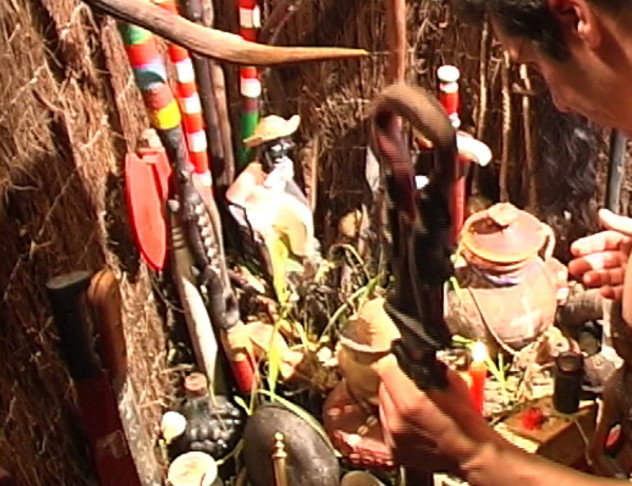2. Palo Mayombe
SEE ALSO – 10 Most evil women in the world – You will be shocked to see their evil deeds! (With Pictures)
Slaves shipped from the Congo to Cuba by the colonial Spanish brought with them their religious beliefs, which in the New World included Santeria and other African religious traditions. One of these traditions was Palo Mayombe. This faith is often maligned in the media, erroneously called Satanism or “Santeria’s evil twin.” In reality, is a syncretic religion that combines traditional Congolese beliefs with Catholicism and some Yoruba practices. While it shares some features with Santeria, which primarily derives from Lukumi/Yoruba beliefs of present-day Nigeria and Benin, Palo ultimately differs with its Congolese origin. Although many Palo practitioners have Santeria training, many Santeria followers fear Palo Mayombe as witchcraft. Palo rituals involve a nganga, a ceremonial cauldron containing earth, sticks, and animal or human remains. Animals are sacrificed over thenganga in order to feed the spirits within. The nganga represents the universe; through sacrifice, a Palo priest, called a Palero or Palera, caninstruct the spirits to perform works of magic, heal, curse, or make pacts. Animal sacrifice and the use of human bones has lead to Palo Mayombe practitioners running afoul of the law on charges of animal cruelty and grave robbing.
Palo has thousands of peaceful and law-abiding practitioners, but it has also been appropriated by the criminal element, who seek to use its powers for protection against rivals and the police. One technique is inscribing signatures onto parchment or a brown paper bag, which is then placed into anganga, over which two black pigeons, a red rooster, and two white quails are sacrificed. The blood-soaked paper is then folded and placed with a hummingbird’s heart inside a small leather bag, becoming an amulet meant to render the wearer invisible to the police.
While the media often conflates and misinterprets Afro-Caribbean religious traditions, there are still individual practitioners who use the faith in order to justify crimes. Perhaps the most notorious example of Palo Mayombe gone wrong was in the case of Adolfo de Jesus Constanzo, a Palero who sold his magical talents to Mexico’s cartels and elite in the 1980s. Adolfo de Jesus Constanzo diverged from standard practice by adopting human sacrifice. In 1986, the mutilated body of a baby boy was found in Connecticut with ritual items—coins, fruit, burlap—linking it to a possible Palo Mayombe ritual.
Palo Mayombe lacks a centralized doctrine or hierarchy, meaning its practices can be adopted by individuals with criminal intentions relatively easily. In 2010, Los Angeles used car dealer Ruben Hernandez attempted to use Palo Mayombe rituals against prosecutors and investigators when he was accused of fraud. Hernandez claimed the ritual was not a curse but a form of “spiritual acupuncture” designed to make them believe he was a good man. A year earlier, an illegal grenade manufacturer in Puerto Rico was caught in a sting by undercover agents posing as drug cartel members. In his home, along with signs of syncretic Santa Muerte worship, they found evidence of Palo Mayombe rituals involving (legally sourced) human bones and the police badge of a former Rio Grande City officer.





































Discussion about this post